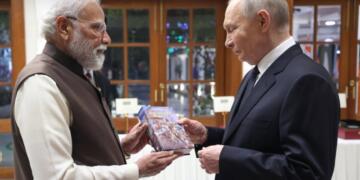The middle-income Indian passenger vehicle market is today represented by several brands- Maruti Suzuki, Hyundai, Honda, Skoda, Kia, Tata Motors and Mahindra to name a few. However, it is Maruti Suzuki that continues to dominate the market with a share of over 40 percent. The second-highest selling brand, Hyundai, is far behind Maruti Suzuki with just over 14 percent market share in the month of October.
This should give a fair idea of how people in India continue to purchase Maruti Suzuki in large numbers, even though other brands are offering really good options at competitive prices. However, Maruti Suzuki as a car brand is bound to lose much of its glory for several reasons. First, let’s trace the history of Maruti Suzuki’s epic rise in India and then we will dive into the reasons that are likely to trigger its decline.
The rise of Maruti Suzuki as India’s affordable car brand:
Till the late 1980s, India followed a public sector-dominated economic model that didn’t allow private enterprises or foreign companies to thrive in the Indian market. Naturally, there were not many local car brands that could manufacture high-quality cars at competitive prices and imported cars remained expensive because of protectionist policies.
Owning a car, therefore, remained a distant dream for a large section of India’s population till the 1980s. This formed the context for the rise of Maruti Suzuki as a brand that would manufacture ‘people’s car’ for India. In 1983, Maruti Suzuki 800 was first launched in India, and it became a sensation almost immediately. The name “Maruti” became synonymous with Maruti Suzuki 800 as many middle-class Indians realised the dream of owning a car, which was then a luxury, for the first time in their lives.
In the 1980s, when most of the people in the country could only dream of owning a car, Maruti Suzuki 800 offered everything that the Indian customer wanted- affordable prices, low maintenance costs, indigenous car parts and high fuel efficiency. In the future years, these features became the unique selling point (USP) of almost every Maruti Suzuki brand launched in the country.
Changing Indian market and Maruti Suzuki’s decline:
When Maruti Suzuki launched 800 or even other brands like Zen, Wagon R, Alto and Swift in the 1990s and 2000s, fuel efficiency and affordability were the dominant priorities of the Indian consumer. But today, consumer priorities are changing. The government and car owners are now more concerned about issues like the safety as India accounts for 11 per cent of the global deaths in road accidents despite accounting for just 1 percent of the world’s vehicles. Comfort and features are some of the other top priorities in India’s passenger vehicles market.
However, Maruti Suzuki doesn’t seem to be performing particularly well on these fronts:
Poor car crash rating:
Maruti Suzuki cars are severely criticised for their poor performance in the Global New Car Assessment Program (NCAP) car crash results. Maruti Suzuki S-PressoVXi, for example, managed a shocking 0-star rating in the Global NCAP crash tests. The car also received a poor 2-star rating for child occupant protection.
In fact, some of the more popular Maruti Suzuki brands have also fared poorly. The 1.0L LXi variant of the new Wagon R for instance managed only a 2-star rating in the Global NCAP crash test. Similarly, the Maruti Suzuki Swift hatchback too achieved only two stars for both adult occupant protection and child occupant protection. Hatchback Celerio and Eeco scored an embarrassing 0 in adult occupant protection. While Eeco managed a 2-star rating in child occupant protection, Celerio was still worse with a 1-star rating in child occupant protection.
Therefore, some of the more popular Maruti Suzuki brands are rather unsafe if crash test ratings are to be believed. On the other hand, Tata and Mahindra are manufacturing some incredibly safe cars. Both Tata Nexon and Tata Punch for example have achieved a 5-star rating in crash tests. Similarly, Mahindra XUV300 and Mahindra Thar too have achieved high scores of 5 stars and 4 stars respectively. Indian consumers thus have reason to shift to brands like Tata and Mahindra when it comes to buying a new automobile.
Lack of innovation:
Well, we don’t need to say much about this. It is no secret that Maruti Suzuki has remained focused almost completely on producing economical vehicles, which do not offer much in terms of the latest technology or safety standards. This doesn’t go down well for the Indian consumer base which seems hungry for better designs and technology infusion that brings in greater driving comfort and smart features.
Compare this with Tata Motors, which has brought in ideas like the ‘Impact Design’ philosophy that has helped it create successful brands like Tata Altroz, Tata Nexon and Tata Harrier. Mahindra too has managed to impress the Indian consumer base with its latest offerings like the 2020 Thar model and XUV700.
Owning a car is no longer a luxury and the average Indian consumer in the 2020s looks for safety, comfort and innovation, as against the consumer of the 1980s who focused totally on affordability and fuel efficiency. Therefore, Maruti Suzuki is facing a mismatch of sorts with consumer preferences and this might as well cause the decline of the leading car manufacturer.






























s cross has tested 5 star in the same test. you should mention that